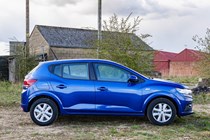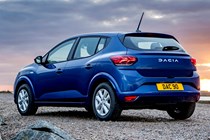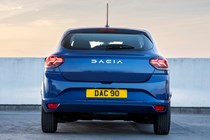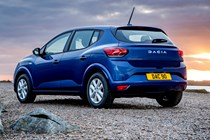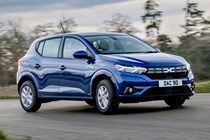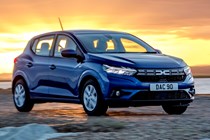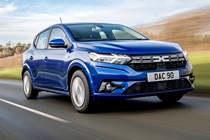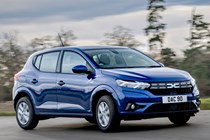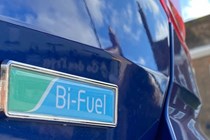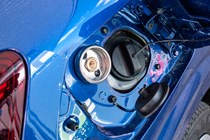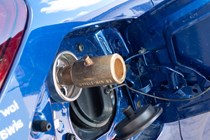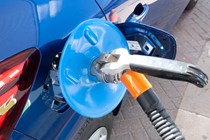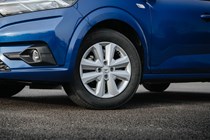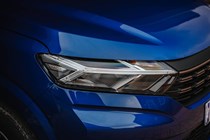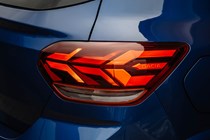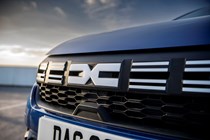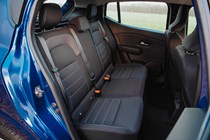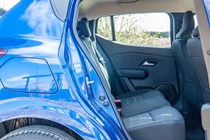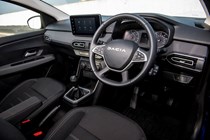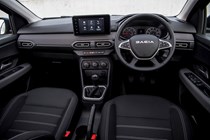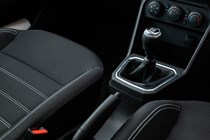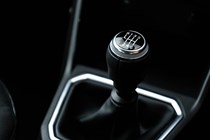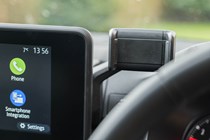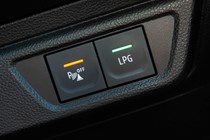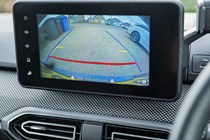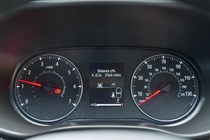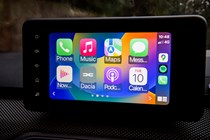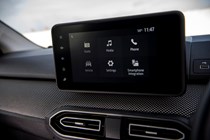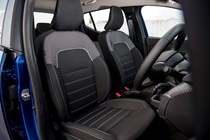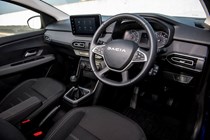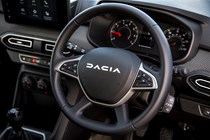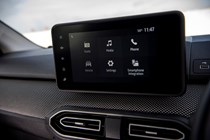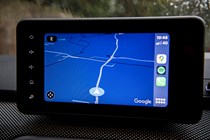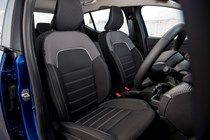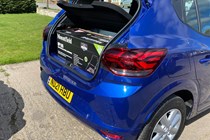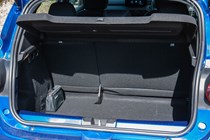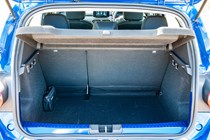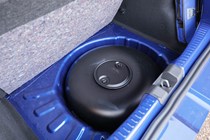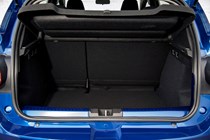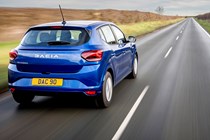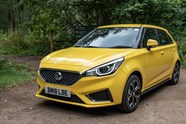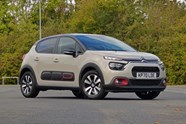Dacia Sandero review
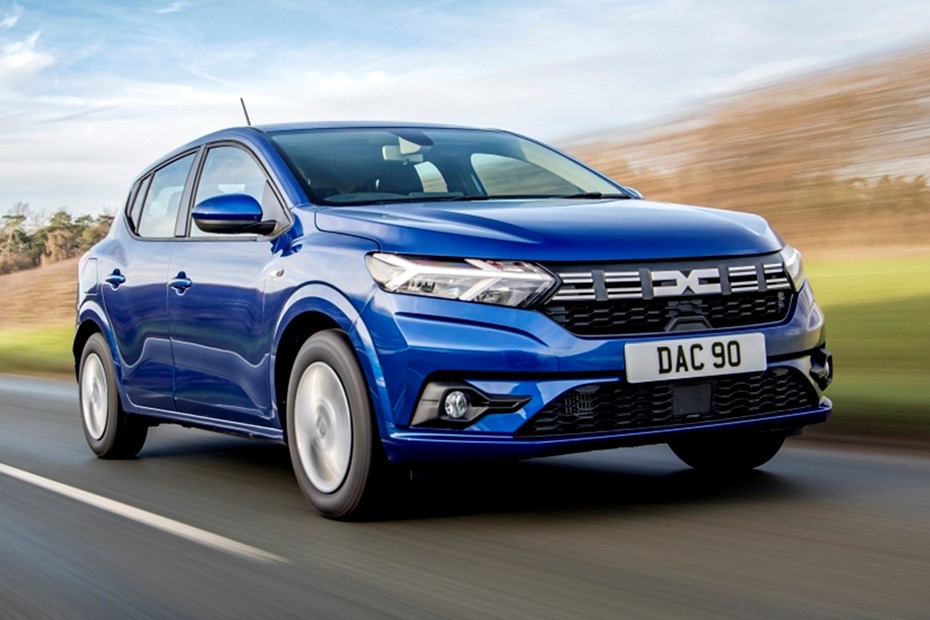
At a glance
| Price new | £13,585 - £14,595 |
|---|---|
| Used prices | £6,124 - £14,976 |
| Road tax cost | £190 |
| Insurance group | 3 - 14 |
Get an insurance quote with

|
|
| Fuel economy | 39.7 - 53.3 mpg |
| Miles per pound | 5.8 - 7.8 |
| View full specs for a specific version | |
Available fuel types
Petrol
Alternative fuel
Pros & cons
- Big enough for a family, small enough for cities
- Well judged interior and quality
- Cheap prices, talented drive too
- Not the last word in refinement
- Low price can be undercut by rivals on finance
- Worryingly low Euro NCAP safety score
Dacia Sandero Hatchback rivals
Overview
The boldly-rebranded Dacia Sandero is famed for its great value, and even if it’s not the ridiculously cheap entry-level offering it once was, it’s still noticeably cheaper (and is in fact among the cheapest cars in the UK) than all of its similarly-sized small car rivals. But it’s not all about a low price, because the Sandero is brimming with talent, packs a reasonable amount of tech and its best-equipped version costs thousands less than an entry-level Polo.
If we talk about direct rivals the value of the Sandero becomes even more apparent. The closest in intent and price are the MG 3 and the Fiat Panda, but the aggressively-priced entry-level Citroen C3 You takes the fight to its Romanian rival for similar money. Otherwise, the more mainstream supermini rivals cost considerably more to buy brand new.
Historically, Dacia has used older technology from within the Renault group, meaning that development costs were lower, while cheaper materials and spartan equipment kept showroom prices low. Yet the latest Sandero is built on a contemporary platform shared with the Renault Clio and includes the latest technology on higher-spec models.
Just look at the photos in our Dacia Sandero gallery above: it doesn’t look dated – in fact, it looks bang up-to-date, with sharp LED headlight signatures and bold, assertive wheelarches defining the front view. It’s stocky, squarish and upright – to get the most space out of the compact footprint – but it has a clarity of purpose that many cars seem to be losing as they attempt to be all things to all people.
The Sandero never loses sight of its back-to-basic premise. The range structure is delightfully simple, kicking off with the aptly named Essential model or you can step up to the Expression trim level for a little more. This adds in niceties such as one-touch electric windows, a leather steering wheel, parking camera, automatic lights and an 8.0-inch digital screen to mirror your smartphone.
Dacia has also culled some of the engine choices customers used to have: it’s now a simple choice of the more powerful TCe 90 engine with or without automatic transmission. The LPG autogas-powered Sandero Bi-Fuel is also available, after a brief hiatus, and uniquely offers a 600-mile range from a freshly fuelled example with petrol and gas. If you’re looking for hybrid assistance, this is not the car for you – it’s a down-to-earth riposte to that more complex solution to fuel saving.
So, should you buy one and go back to basics? Click through the next few pages to read everything you need to know about the Dacia Sandero including its practicality, how much it costs to run, what it’s like to drive – and whether we recommend buying one.



